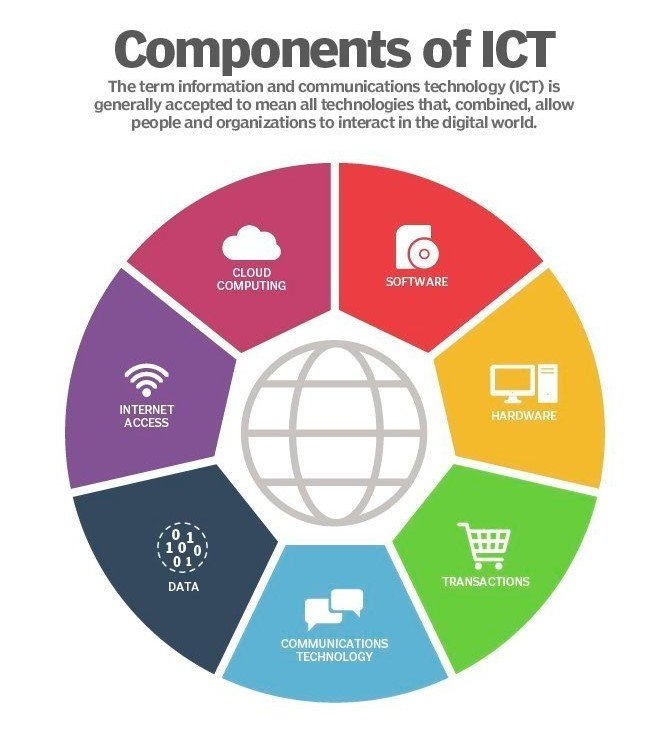Application of ICT in Research , Role and Tools of ICT
Get Study Materials of General Studies for UPPSC ⇒ DOWNLOAD NOW
Application of ICT in Research: Information and Communication Technologies (ICT) refers to technologies that provide access to information through telecommunications. It is similar to Information Technology (IT) but focuses primarily on communication technologies. This includes the Internet, wireless networks, cell phones, and other communication mediums.
Information and communication technologies (ICT) have provided society with a vast array of new communication capabilities. For example, people can communicate in real-time with others in different countries using technologies such as instant messaging, voice over IP (VoIP), and video-conferencing. Social networking websites like Facebook allows users from all over the world to remain in contact and communicate on a regular basis.
Application of ICT in Research
ICT, or information and communications technology (or technologies), is the infrastructure and components that enable modern computing.
Although there is no single, universal definition of ICT, the term is generally accepted to mean all devices, networking components, applications and systems that combined allow people and organizations (i.e., businesses, nonprofit agencies, governments and criminal enterprises) to interact in the digital world.
UNIT –
II: Research Aptitude (Click below on the topic to read the study
notes)
|
Components of an ICT System
ICT encompasses both the internet-enabled sphere as well as the mobile one powered by wireless networks. It also includes antiquated technologies, such as landline telephones, radio and television broadcast – all of which are still widely used today alongside cutting-edge ICT pieces such as artificial intelligence and robotics.
The list of ICT components is exhaustive, and it continues to grow. Some components, such as computers and telephones, have existed for decades. Others, such as smartphones, digital TVs and robots, are more recent entries.

Application of ICT in Research
Applications of ICT are mainly used by researchers for its ability to ease the knowledge-gathering process and to enhance resource development. Researcher in general value creativity and originality, thus the ICT tools which provide with the most open situations with great autonomy to the researcher can really help in identifying and solving research problems in the most creative ways.
The use of ICT is based on the individual’s logical assessment of how various applications increase his/her effectiveness and efficiency in work and provide ease in communication with peers.
Use of ICT tools or application for making research data and information available are plenty in numbers today, but the best use of ICT tools would be to improve cognitive skills and thus help discriminate, analyse and create information rather than simply accumulate.
As usually research process deals with a large amount of complex information and requires a lot of skills to analyse and organize these well, any ICT tool which helps the researcher give meaning and precision along with adding value to the information generated would be rated above the ones which help in just gathering information.
Generally, Applications of ICT help the researcher in the following research-related tasks:
- identify appropriate information sources
- critically analyse information
- research effectively
- manage information
- use the information to extend and communicate knowledge across subject fields
- search up to ten databases and electronic resources simultaneously
- receive results in a common format
- link to individual databases for more specialised searching
- select favourite resources and e-journals, save searches and records, and set up email alerts.
Applications of ICT have many effects on research. They can be classified into three categories which include:
- Applications of ICT in pre-data analysis
- Applications of ICT in data analysis, and
- Applications of ICT in post-data analysis
A. Applications of ICT in pre-data analysis
Applications of ICT in pre-data analysis refers to the activities how ICTs are applied on activities of social science research before reaching the stage of data analysis.
- Literature Search, Article Availability, Thesis and Dissertation Availability
- Content Search
- Literature Tracking
- Data Collection
1. Literature Search
Last time researchers need to perform a manual search on hard copies of literature in libraries whereby this is a tedious effort and the search results were limited. On the contrary, a lot of research materials, literature and artefacts today can be searched using Internet search engines and databases.
- ShodhGanga: Indian theses repository where you can search and download the theses.
- Google Scholar: Provides a way to broadly search for scholarly literature across disciplines and sources.
- Microsoft Academic Search: Find information about academic papers, authors, conferences, journals, and organizations from multiple sources.
- Mendeley: A unique platform comprising a social network, reference manager, article visualization tools.
- SSRN: Multi-disciplinary online repository of scholarly research and related materials in social sciences.
Also Read: How to Conduct A Literature Review?
Some other Famous Database for Research Articles and literature:
- AMS
- Annual Reviews
- ASME Digital Collection
- Cambridge Core
- Chemical Abstracts Service (CAS)
- Cochrane Library
- eBook Academic collection
- EBSCO Databases, Discovery Service, eBooks, Point of Care Products, DynaMed and Journal Collections
- EBSCO Information Services
- Economic & Political Weekly
- Elsevier
- Emerald eJournals
- Encyclopedia Britannica
- IEEE Xplore
- Indian Citation Index.
- Indian Journals
- IOPscience
- JSTOR
- Portland Press
- Project Euclid
- Project MUSE
- ProQuest databases
- Royal Society of Chemistry Journals
- Royal Society of Chemistry Publications Online
- Sage Online Journals
- Science Mag
- Scitation
- SIAM Journals Online
- Springer Link
- Supreme Court Cases Online
- Taylor & Francis Online
- Web of Knowledge
- Wiley Online Library
2. Content Search
This observation is also supported what Sekaran (2003) had stated that online search using technology is inexpensive and can improve the identification of relevant sources of literature.
Such content search also enables a researcher to evaluate quickly whether a particular article or thesis et al. is worthy for his or her deeper review. Moreover, the content search also helps a qualitative researcher to count the frequency of certain keywords appears in an interviewed transcript more effectively.
3. Literature Tracking
In the past, researchers have to sort, classify and store all their literature or artefacts that they had reviewed into computer folders or physical folders/place holders. Researchers also need to create their own tracking mechanism e.g. in a word document or spreadsheet format to track and manage their reviewed literature so that they can re-use or refer to in future. Doing these manually can be daunting tasks.
With the advancement of ICT, researchers can still use the old approaches but more and more researchers now are using software like Mendeley which can help manage, share and discover the literature contents and contacts that they had reviewed. Using software like Mendeley to track a researcher’s literature is saving time and effort as well as capable to manage lots of literature that the researcher was not possible in the past.
4. Data Collection
With the help of application of ICT, Data collection can be collected via online, web-based or Internet survey. Using this purpose-built software and Internet technology which are greener technology in data collection can reduce the time and cost to collect surveyed responses from the respondents.
Not only an online survey can be administered more effectively, but the data collected in its original format can also be input directly into the statistical software.
Important Data Collection Application of ICT:
B. Applications of ICT in data analysis
Application of ICT in data analysis includes the ICTs are applied on activities during the stage of data analysis and can be divided into:
- Quantitative Data Analysis
- Qualitative Data Analysis
1. Quantitative Data Analysis:
The exploratory factor analysis, multiple regression, t-test and Analysis of Variance (ANOVA) are some common data analysis techniques used among researchers conducting quantitative research. There are also some advanced and popular data analysis techniques like path analysis, covariance-based Structural Equation Modeling (SEM), variance-based SEM (partial least squares), hierarchical regression analysis, hierarchical linear modelling et al.
- Statistical Package for Social Science / SPSS are more advanced and rich with a lot of features and functionalities
- R (R Foundation for Statistical Computing)
- MATLAB (The Mathworks)
- Microsoft Excel
- SAS (Statistical Analysis Software)
- GraphPad Prism
- Minitab
List of Statistical Software Packages – click
2. Qualitative Data Analysis:
The following statistical software packages are for qualitative data analysis:
Also Read: 11 Best Data Analysis Software for Research
C. Application of ICT in post-data analysis
Application of ICT in post-data analysis refers to the ICTs are applied on activities of research after completing the stage of data analysis which covers:
- References and Bibliography Compilation
- Article and Thesis / Dissertation’s Discussion among Researchers, Supervisors, Supervisees etc.
- Plagiarism Detection
- Journal Manuscripts Submission
1. References and Bibliography Compilation:
A few years back, researchers tend to compile references and bibliography manually. They literally typing in to build the entire section of the references or bibliography then followed by sorting them in ascending order. Recently, while researchers are writing, they can use citation or reference management software to help select citations and populate the references or bibliography automatically. This type of software can improve researchers’ efficiency and accuracy while preparing their articles or theses.
The following software is used for referencing and bibliography compilation:
2. Article and Thesis / Dissertation’s Discussion:
In the course of producing an article, thesis or dissertation, there are needs for discussions or communications among researchers, supervisors, supervisees or during the viva voce. Now, we have the advanced application of ICT to facilitate sharing of research materials, seeking comments from subject matter experts, enable analytics to monitor papers published, as well as following some scholarly works.
There are online platforms or websites which can be used for such discussion:
3. Plagiarism Detection
In the past, plagiarism acts were slow and hard to detect as the authority of universities or journals dependent on readers to identify them manually while they were reading through the submitted articles or theses/dissertations. With the advancement of ICT, readers or researchers can use plagiarism checker software available in the market like:
- Grammarly
- Article Checker
- Turnitin
- DupliChecker etc.
4. Journal Manuscripts Submission:
In the past, journal manuscript submission used to be via email communications between researchers/authors and journal’s editors/coordinators. Now web-based journal manuscript management and peer-review software, electronic manuscript submission or management systems are commonly used among the community of researchers and journals/publishers. Using such systems can reduce their time of submission and checking the status of publishing. Moreover, using such systems can greatly improve the productivity and quality of work to administer the submission as well as the peer-review management in which miscommunication, loss or delay of communication can be minimized.
The following are the Applications of ICT for manuscript submission and publicizing:
Apart from the above-mentioned ICT tools for research, there is a long list of ICT applications which can be used for quality research papers and theses.
Useful links
Social links
Useful links
Contact Us
Address: B 14-15, Udhyog Marg, Block B, Sector 1, Noida, Uttar Pradesh 201301
Alpha-I Commercial Belt, Block E, Alpha I, Greater Noida, Uttar Pradesh 201310
